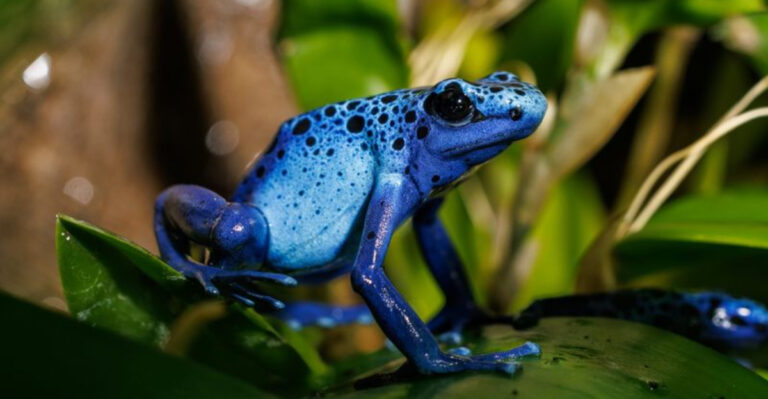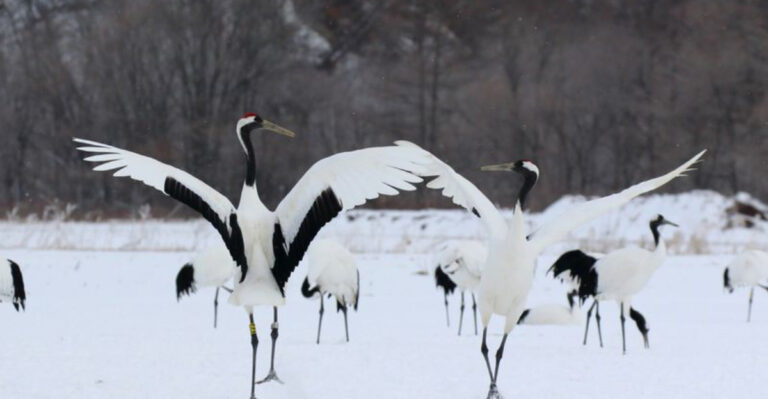20 Unwanted Garden Guests And How To Defeat Them
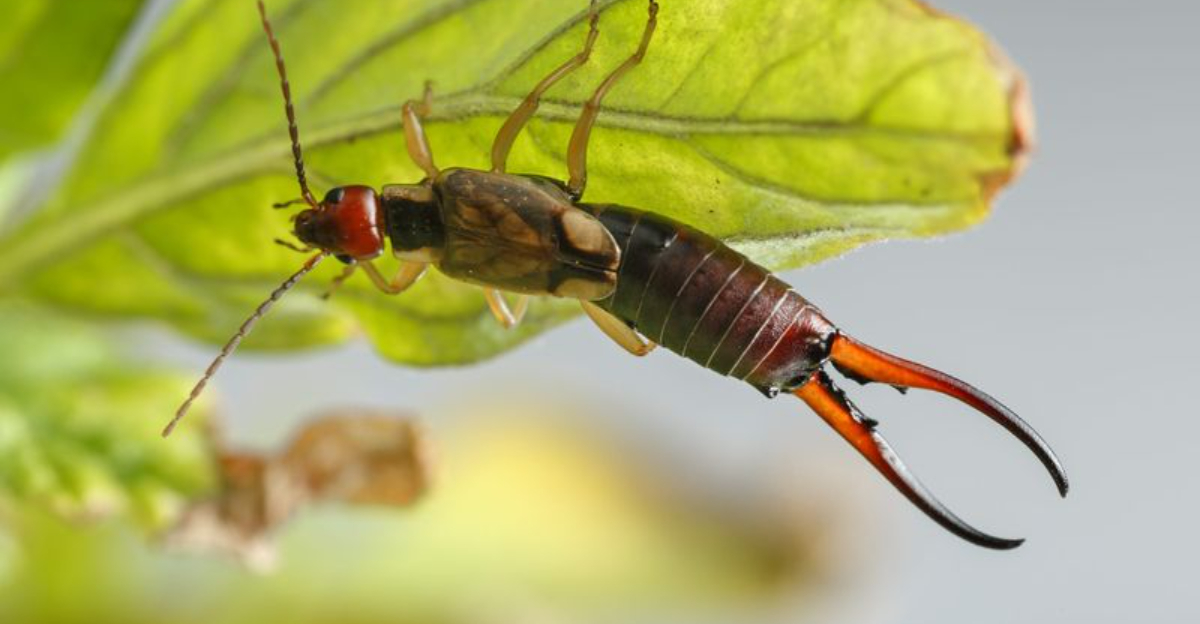
Gardening is often a peaceful and rewarding hobby, but it can quickly turn into a battle against unwanted guests that threaten the beauty and health of your plants.
From tiny insects to small mammals, these garden invaders can cause significant damage if not properly managed. This guide will introduce you to 20 common garden pests and provide actionable advice on how to keep them at bay, ensuring your garden remains a thriving oasis.
1. Aphids
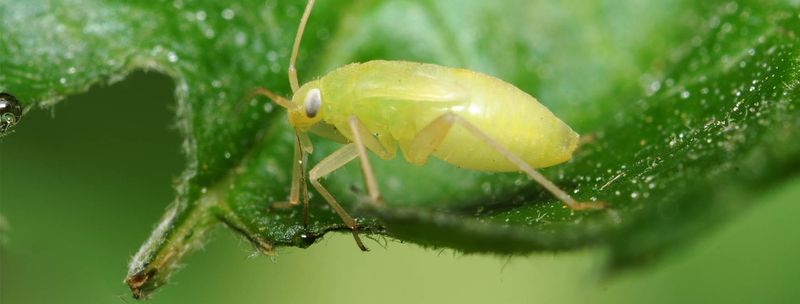
Aphids are small sap-sucking insects that can cause severe damage to a wide range of plants. These tiny bugs are often found in clusters, feeding on tender new growth and leaving behind sticky honeydew that attracts ants and fosters mold growth. Their rapid reproduction makes them a challenge for any gardener.
To combat these pests, a strong stream of water can dislodge them from plants, followed by applications of insecticidal soap or neem oil. Encouraging natural predators like ladybugs and lacewings can also help keep aphid populations under control.
It’s crucial to regularly inspect your plants for early signs of infestation, as catching them early can prevent extensive damage. Aphids can be particularly problematic in spring and early summer, so vigilance during these times is key.
2. Slugs And Snails
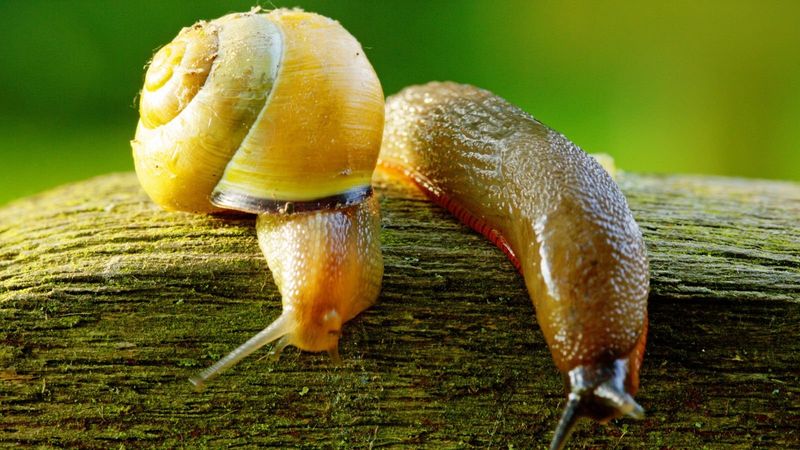
Slugs and snails are notorious for their voracious appetite, especially for young seedlings and leafy greens. These mollusks can be identified by their slimy trails and the jagged holes they leave behind in plant leaves.
There are several strategies to combat these pests, including hand-picking them in the evening when they’re most active, setting up beer traps, or using barriers like crushed eggshells and copper tape to deter them.
Maintaining a tidy garden by removing debris and avoiding overwatering can also help reduce their habitat. Predatory beetles and birds are natural allies in controlling slug and snail populations, so attracting these creatures can be beneficial.
3. Japanese Beetles
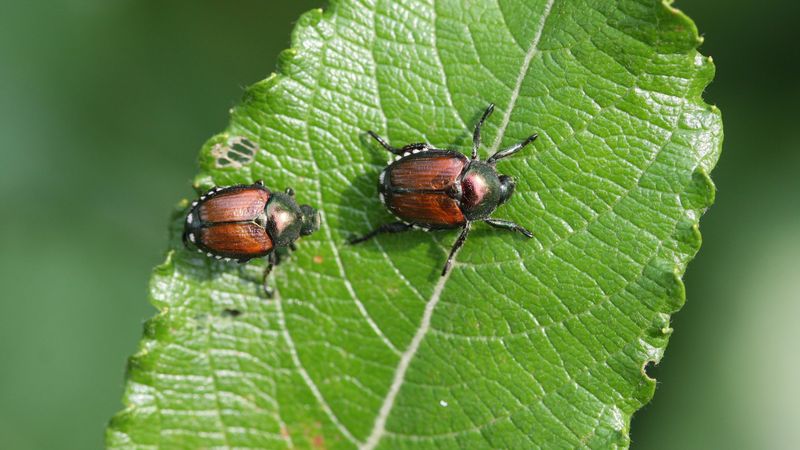
The Japanese beetle is a striking insect with a metallic green body and coppery wings, known for skeletonizing leaves and damaging flowers. These beetles often appear in large numbers, making them a significant threat to ornamental plants and crops.
Handpicking is effective during early morning hours when they are less active. Additionally, targeting their larvae with neem oil or beneficial nematodes in the soil can reduce future populations.
Using row covers can protect plants during peak beetle season, and planting beetle-resistant varieties can also help minimize damage. Encouraging birds to visit your garden can offer natural control as they feed on these beetles.
4. Spider Mites
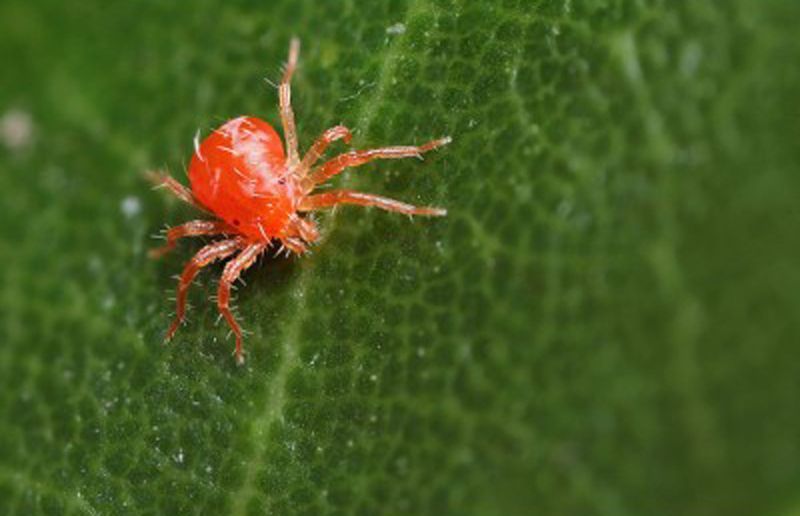
Spider mites are tiny arachnids that thrive in hot, dry conditions and can cause significant damage by sucking plant sap. They are often identified by the presence of fine webbing on plants and the speckled appearance of leaves.
Increasing humidity through regular misting or using a garden hose can help manage spider mite populations. Introducing predatory mites or ladybugs can also provide effective biological control.
For severe infestations, horticultural oils and insecticidal soaps are useful treatments. Regularly checking plants, especially during dry spells, is important to catch infestations early and prevent serious damage.
5. Whiteflies
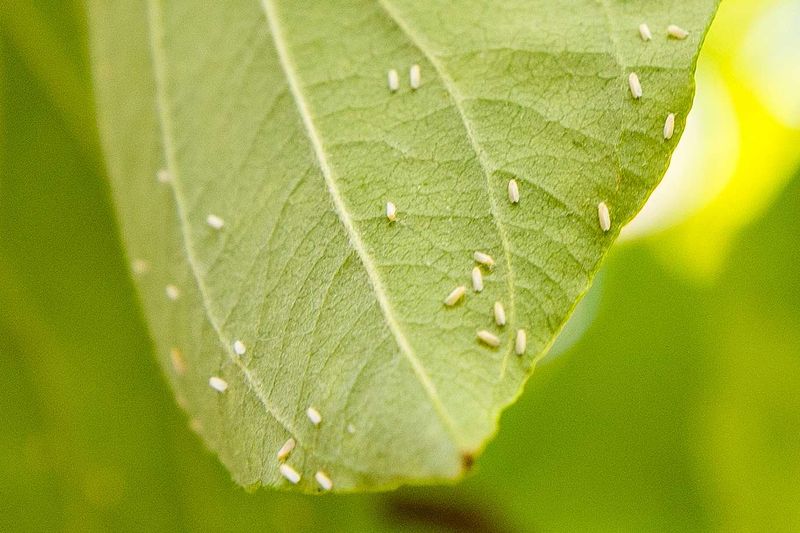
Whiteflies are small, white-winged insects that cluster on the undersides of leaves and suck sap from plants, leading to yellowing and wilting. Their presence is often accompanied by a cloud of tiny insects flying when disturbed.
To control whiteflies, yellow sticky traps can capture adults, while insecticidal soaps and neem oil can manage immature stages. Introducing beneficial insects like ladybugs and parasitic wasps can also help keep their populations in check.
Maintaining plant health through proper watering and nutrition is essential, as stressed plants are more susceptible to infestations. Regular monitoring can help detect and address these pests before they cause significant damage.
6. Cabbage Worms
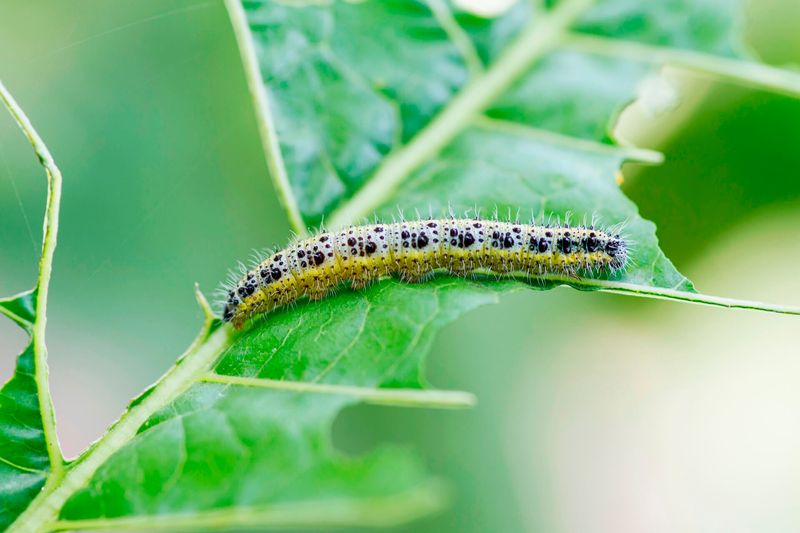
Cabbage worms, the larvae of the cabbage white butterfly, are common pests on cabbage, broccoli, and related plants. These green caterpillars can cause significant foliar damage, leaving behind large holes and frass.
To manage cabbage worms, consider using row covers to prevent butterflies from laying eggs on plants. Hand-picking the caterpillars and using Bacillus thuringiensis (Bt), a natural bacterial insecticide, can be effective control methods.
Encouraging birds and parasitic wasps in your garden can also help reduce cabbage worm populations. Regularly inspecting plants for eggs and young larvae is key to minimizing damage.
7. Cutworms
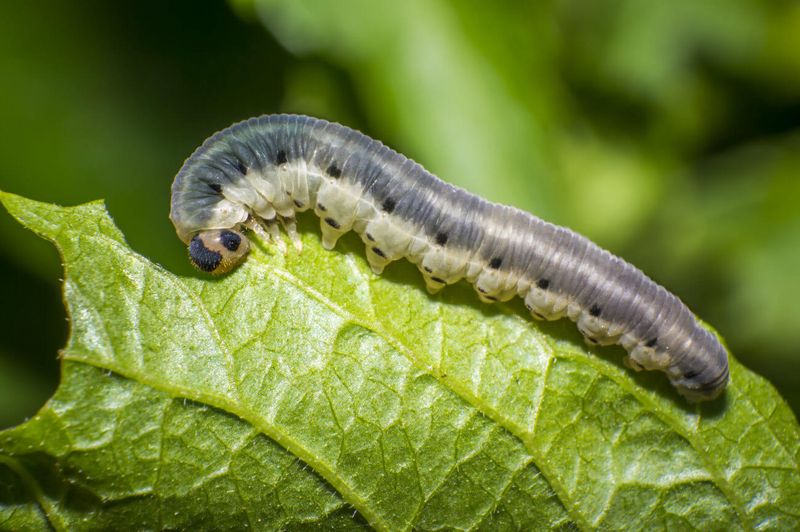
Cutworms are moth larvae that hide in soil during the day and feed on plant stems at night, often cutting down young seedlings at the base. These pests can be particularly devastating to newly planted gardens.
To protect plants, consider using collars made of cardboard or aluminum foil around seedlings to prevent cutworm access. Tilling the soil before planting can expose and eliminate overwintering larvae.
Maintaining a clean garden with reduced weed cover can also limit their habitat. Encouraging natural predators like birds and beetles will aid in keeping cutworm populations in check.
8. Squash Bugs
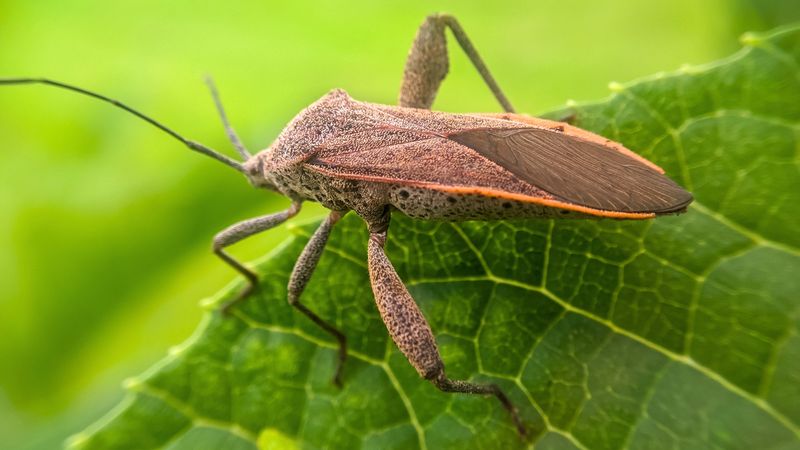
Squash bugs are a common pest of squash, pumpkins, and related plants, feeding on sap and causing wilting and yellowing leaves. They are often found in large numbers on the undersides of leaves.
Hand-picking adults and eggs in the early morning or late evening can help reduce populations. Insecticides may be necessary for severe infestations, but cultural controls like removing plant debris and using row covers can prevent issues.
Companion planting with nasturtiums and radishes can deter these bugs, while attracting beneficial insects like spiders and predatory beetles can provide natural control.
9. Leaf Miners
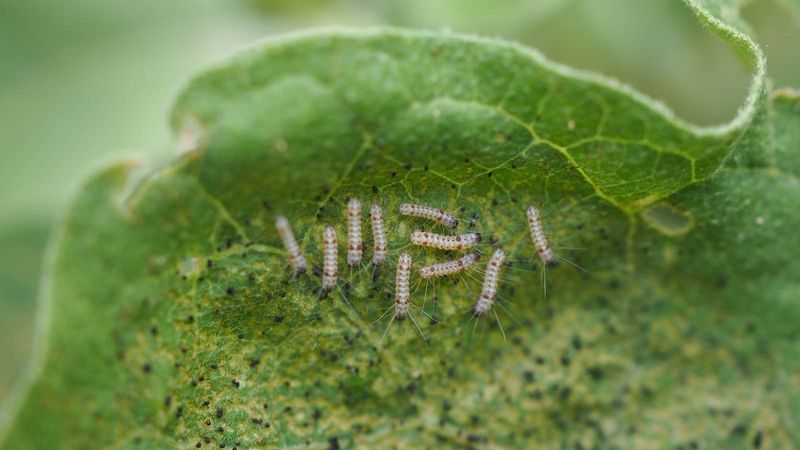
Leaf miners are the larvae of various insects that tunnel through leaf tissue, creating unsightly trails and reducing photosynthesis. Spinach, beets, and chard are often affected.
Removing and destroying affected leaves can help manage infestations. Floating row covers can prevent adult insects from laying eggs on plants.
Introducing parasitic wasps, which prey on leaf miner larvae, can provide biological control. Maintaining plant health and promptly removing weeds can also reduce leaf miner populations and minimize damage.
10. Earwigs
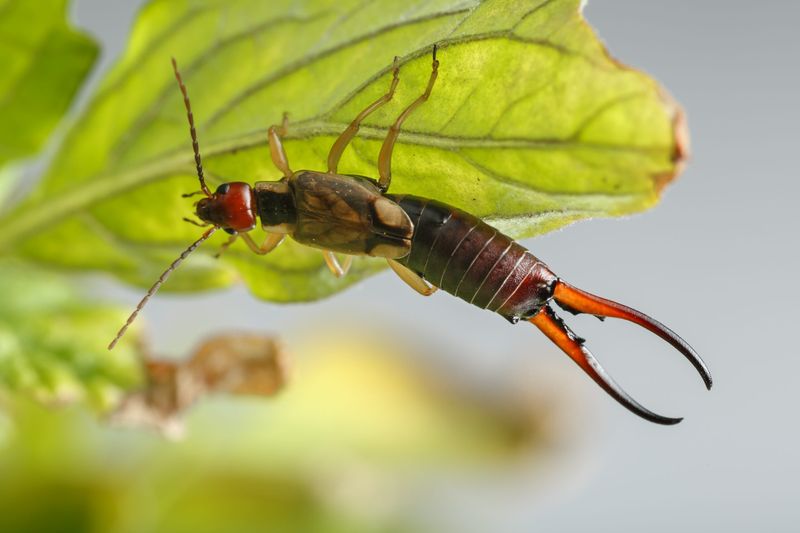
Earwigs are nocturnal insects that can be both beneficial and damaging to gardens. While they consume decaying matter and some pests, they may also feed on tender seedlings and soft fruits.
To control earwigs, reduce hiding places by removing debris and using rolled newspaper or cardboard as traps. These can be collected and disposed of in the morning.
Maintaining a balanced ecosystem with natural predators like birds and toads can help manage earwig populations. However, if they become a significant problem, baiting with a mixture of soy sauce and vegetable oil can also be effective.
11. Rabbits
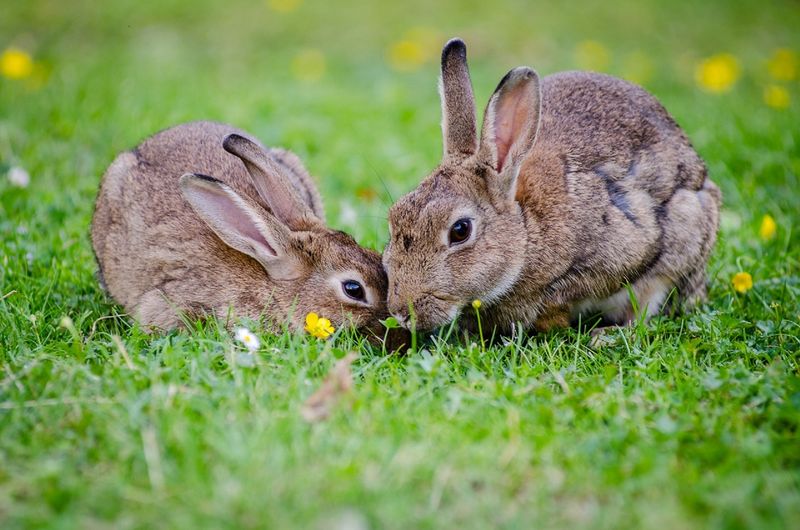
Rabbits might be cute, but their appetite can wreak havoc on a garden, particularly affecting leafy greens and young shoots. Evidence of their presence includes droppings and cleanly clipped plants.
To deter rabbits, install a garden fence that is at least two feet high and buried several inches underground. Using repellents like blood meal or planting deterrent herbs such as rosemary can also help.
Encouraging natural predators, such as hawks and owls, can aid in controlling rabbit populations. Regularly checking for signs of intrusion and reinforcing barriers is crucial in keeping these furry invaders away.
12. Deer
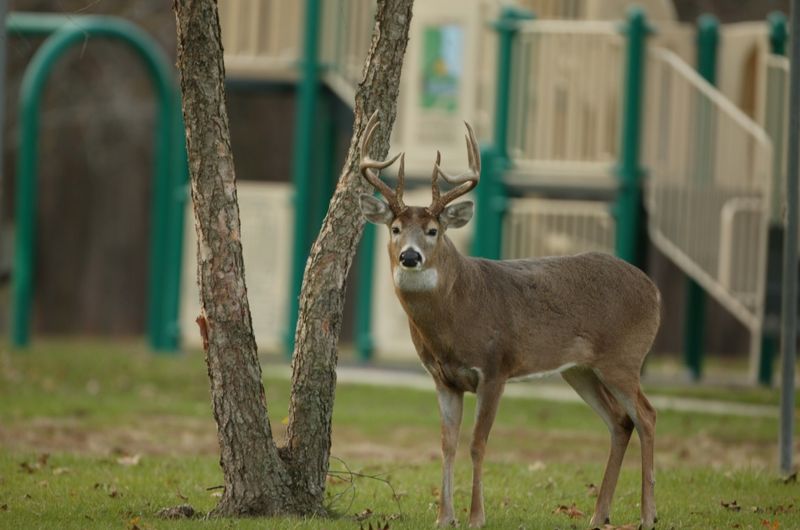
Deer are majestic but can be a major nuisance in gardens, eating everything from flowers to vegetables and young trees. They often leave ragged edges on plants and identifiable tracks in soft soil.
Fencing is the most effective solution, with a height of at least eight feet to prevent jumping. Deer repellents, either commercially available or homemade, can also deter them.
Planting deer-resistant varieties and using scare tactics like motion-activated sprinklers can further protect your garden. Regularly assessing the garden for signs of deer activity will help you stay ahead of any potential damage.
13. Voles
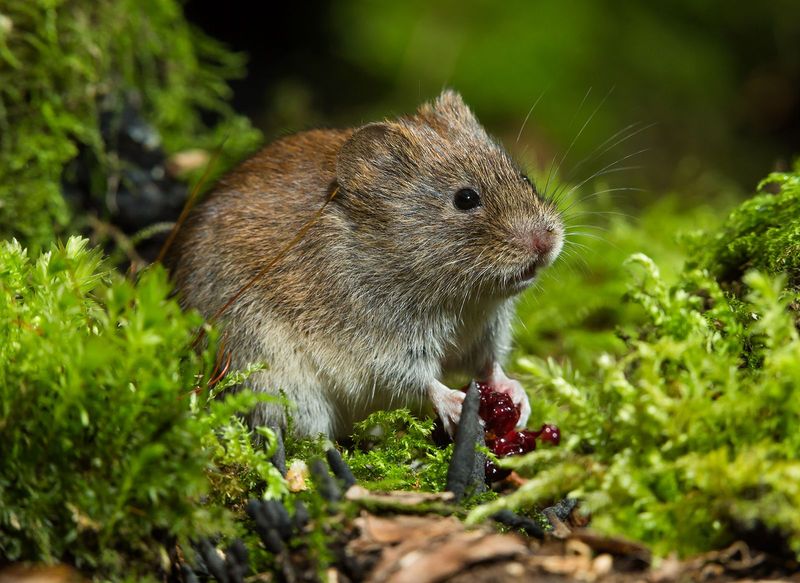
Voles are small rodents that can damage gardens by eating roots and bulbs and creating extensive burrow systems. Their presence is often indicated by runways in the grass and small burrow openings.
To manage voles, consider installing underground barriers using hardware cloth around vulnerable plants. Trapping with mouse traps baited with peanut butter can also be effective.
Maintaining a tidy garden free of dense vegetation and debris can reduce vole habitats. Encouraging natural predators like owls and snakes can further help in keeping vole populations in check.
14. Gophers
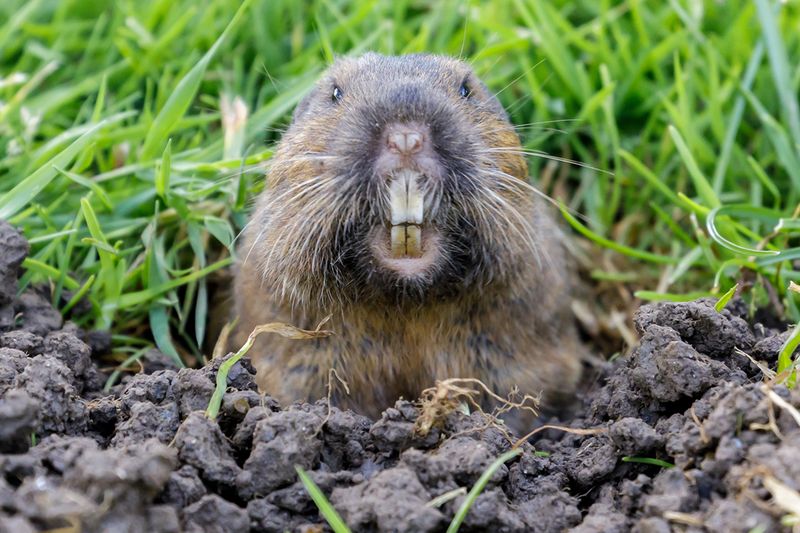
Gophers are burrowing rodents that can cause significant damage by eating roots and creating mounds of soil in gardens. These pests are particularly problematic for vegetable gardens and ornamental landscapes.
Trapping is one of the most effective methods of control, with traps placed in active tunnels. Exclusion techniques, such as underground fencing, can also protect valuable plants.
Using repellents like castor oil granules and encouraging predators like hawks can help deter gophers. Regularly checking for new mounds and addressing them swiftly will minimize damage.
15. Moles
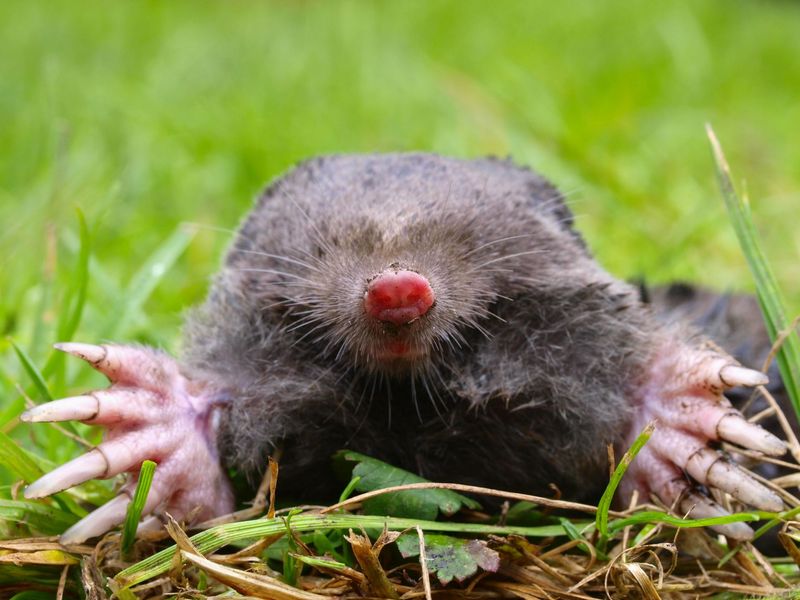
Moles are insectivorous mammals that can disrupt gardens while searching for insects and earthworms, creating unsightly raised tunnels. Though they don’t typically eat plants, their digging can damage root systems.
To manage moles, consider using traps specifically designed for them, placed in active tunnels. Eliminating their food source through insect control can also reduce mole activity.
Maintaining a healthy lawn with proper watering and aeration can help prevent mole invasions. Encouraging predators like owls and foxes can provide natural control of mole populations.
16. Raccoons
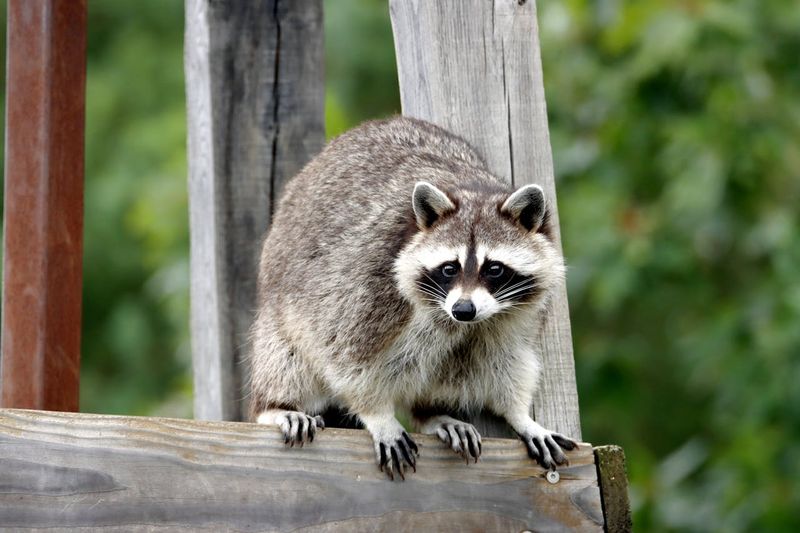
Raccoons are clever scavengers that can cause chaos in gardens, digging up plants and raiding trash bins at night. Evidence of their presence includes tipped-over bins and scattered debris.
Securing trash and compost bins with tight-fitting lids and using bungee cords can help deter raccoons. Installing motion-activated lights or sprinklers can also keep them away from garden areas.
Fencing with a buried base and electric wires can be effective, especially when combined with repellents like ammonia-soaked rags. Regularly checking for signs of raccoon activity can help in maintaining garden tranquility.
17. Squirrels
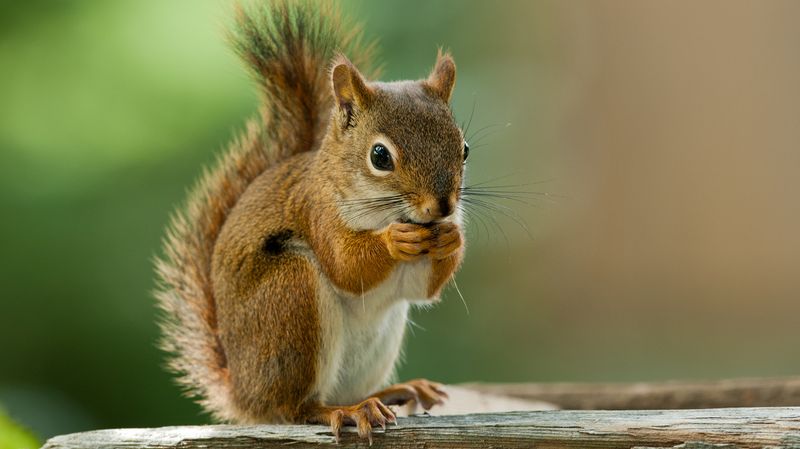
Although adorable, these little fluffballs are true pesky visitors. Squirrels are agile rodents that can feast on fruits, nuts, and birdseed, often causing frustration for gardeners. They can also dig up bulbs and chew on garden structures.
Netting and tree guards can protect fruit trees and bulbs from squirrel damage. Providing alternative food sources like squirrel feeders may distract them from your prized plants.
Using taste and odor repellents, as well as motion-activated devices, can help deter squirrels. Ensuring that bird feeders are equipped with baffles to prevent squirrel access is also recommended.
18. Chipmunks
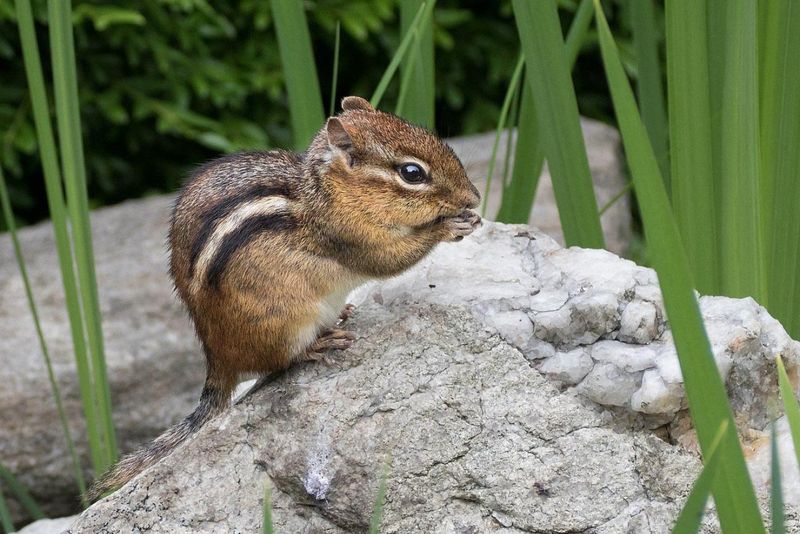
Chipmunks are small, striped rodents known for gathering seeds and nuts, but they can also dig in gardens, causing damage to bulbs and roots. Their presence is often marked by shallow burrows and scattered debris.
Using mesh coverings over bulbs and applying repellents can protect plants from chipmunk damage. Live traps are another option for humane control.
Reducing food sources by cleaning up fallen seeds and nuts can make the garden less attractive to chipmunks. Encouraging predators like hawks can also help manage their populations.
19. Groundhogs
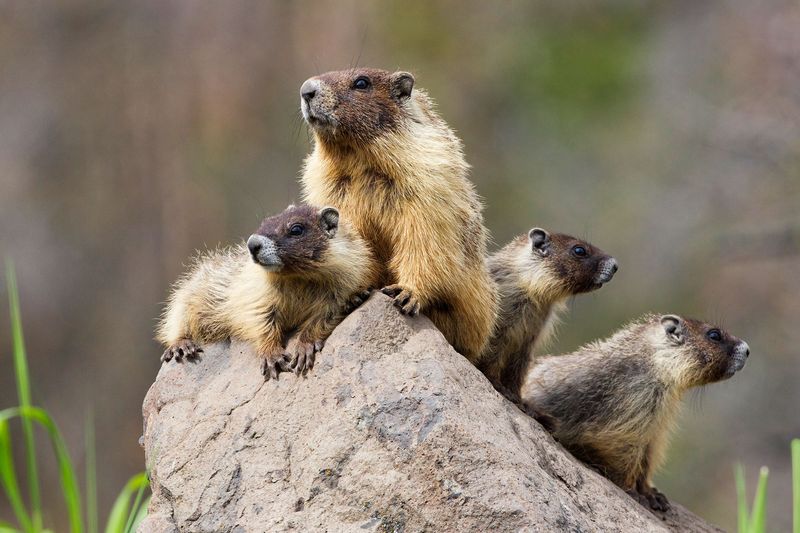
Groundhogs, or woodchucks, are burrowing animals that can devastate gardens by eating vegetables and creating large burrows. These pests are particularly fond of beans, peas, and carrots.
Fencing is an effective measure, with fences buried at least a foot underground to prevent burrowing. Using repellents or scare tactics, such as releasing predator scents, can also deter groundhogs.
Maintaining a clear garden perimeter and removing potential food sources can reduce groundhog attraction. Regular monitoring for signs of burrows can help address problems before they escalate.
20. Cats
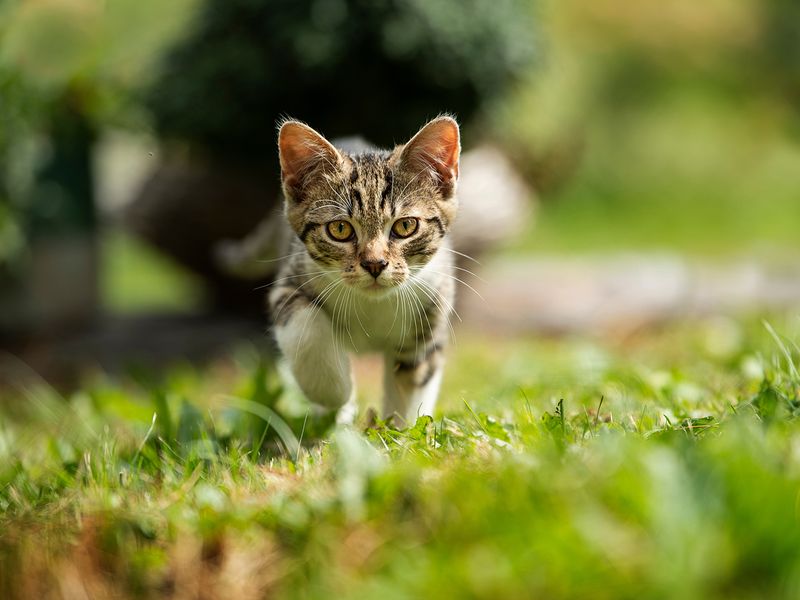
Cats, though beloved pets, can become a nuisance in gardens by digging in soil and using garden beds as litter boxes. They may also disturb birds and other beneficial wildlife.
Using mulch, stones, or chicken wire can deter cats from digging. Planting strong-smelling herbs like lavender or rosemary may also keep them away.
Motion-activated sprinklers and ultrasonic devices can provide additional deterrence. Ensuring that bird feeders and baths are placed in areas less accessible to cats can help protect your garden’s wildlife.


